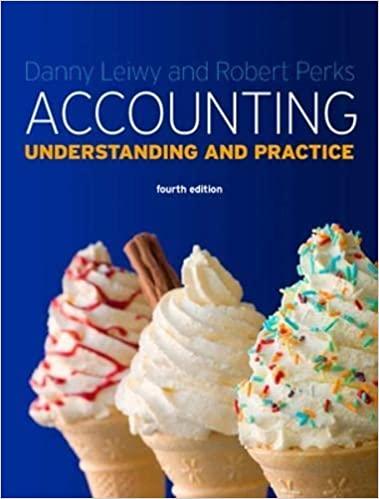Question
Multiple Choice Questions 1)The risk-return principle states that a) Every business decision will result in a profit only. b) The higher the risk, the higher
Multiple Choice Questions
1)The risk-return principle states that
a) Every business decision will result in a profit only.
b) The higher the risk, the higher the actual rate of return.
c) Risk and uncertainty are not synonymous.
d) The higher the risk, the higher the required rate of return
2) Ordinary shares
a) represent the cheapest form of financing.
b) pay dividends to investors before any dividends are paid to preference shareholders.
c) are the only source of equity finance for the firm.
d) entitle the shareholders to vote for directors at the companys annual general meeting.
3) A major disadvantage of the payback period method is that it
a) Is useless as a risk indicator.
b) Ignores cash flows beyond the payback period.c) Does not directly account for the time value of money.
d) Only answers b and c above are correct.
4) If the expected rate of return on a share is less than the investors required rate,
a) the share is experiencing supernormal growth.
b) the share should be bought to maximize return.
c) the company is probably not trying to maximize price per share.
d) the share should be sold.
5) A business is regarded as insolvent if
a) Its current assets is greater than its current liabilities
b) Its equity is greater than liabilities
c) Its assets are greater than its liabilities
d) Its assets are less than liabilities
6) A R250,000 for advertising in the current year is called
a) a sunk cost.
b) capital expenditure.
c) sales expenditure.
d) operating expenditure
7) If there are many projects to consider in investing, which of these techniques is best suited (assuming cash
flows and outlays are known).
a) Payback period.
b) Internal rate of return.
c) Average accounting return.
d) Profitability index.
8) Risks associated with an economy, such as war,earthquakes are referred to as
a) systematic
b) diversifiable risk
c) economic risk.
d) non-diversifiable risk
9) In relation to payment priority in liquidation, which of the following is correct(highest to
lowest).
a) Preferred stock, taxes, wages
b) Taxes, secured creditors, ordinary shares
c) Unsecured creditors, ordinary shares.
d) Secured creditors, taxes, ordinary shares.
10) If the bank states that the nominal rate is 12.5% and if inflation is 3.5%, the real rate of interest
will be:
a) 12.5%
b) 9%
c) 3.5%
d) 16%
Step by Step Solution
There are 3 Steps involved in it
Step: 1

Get Instant Access to Expert-Tailored Solutions
See step-by-step solutions with expert insights and AI powered tools for academic success
Step: 2

Step: 3

Ace Your Homework with AI
Get the answers you need in no time with our AI-driven, step-by-step assistance
Get Started


